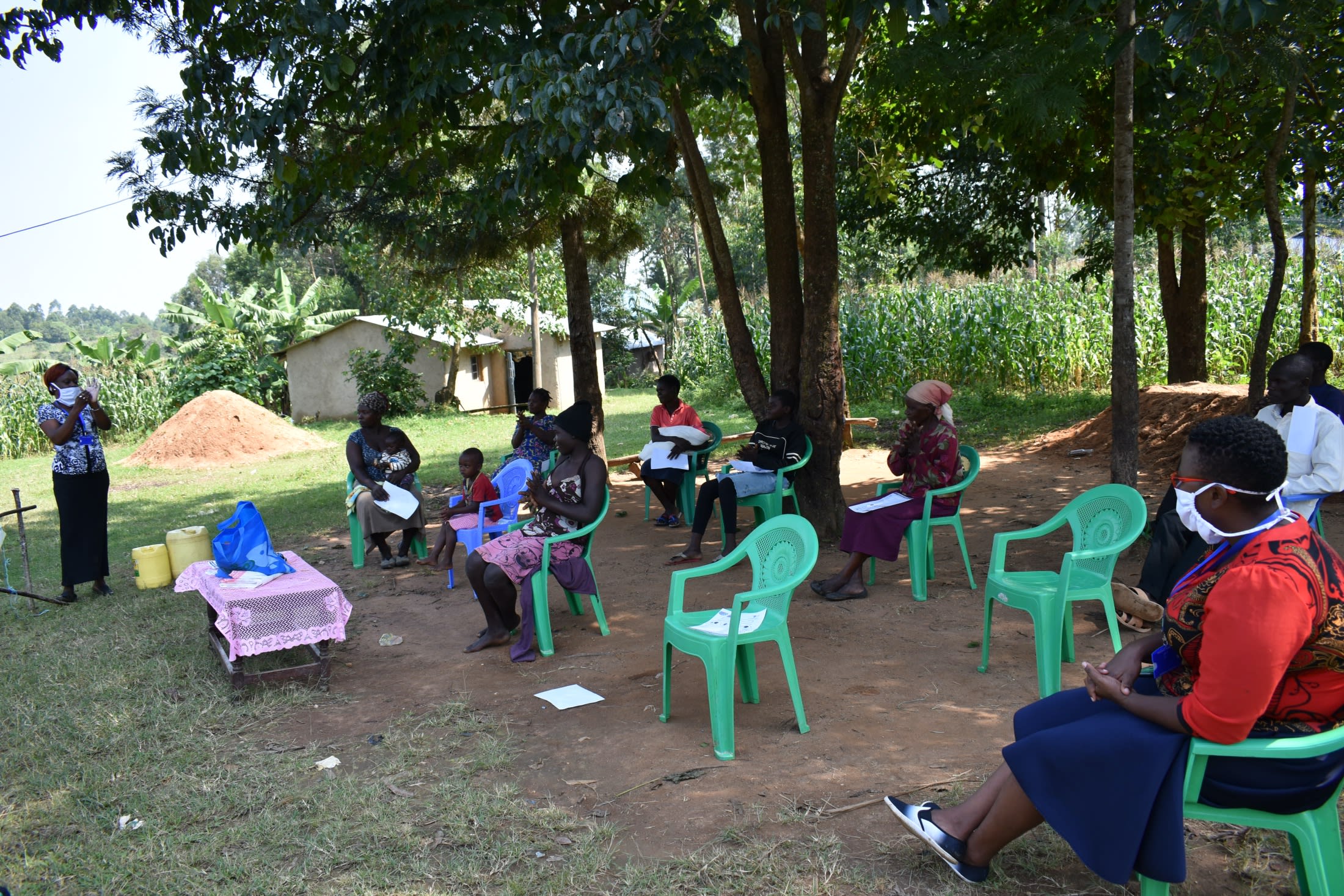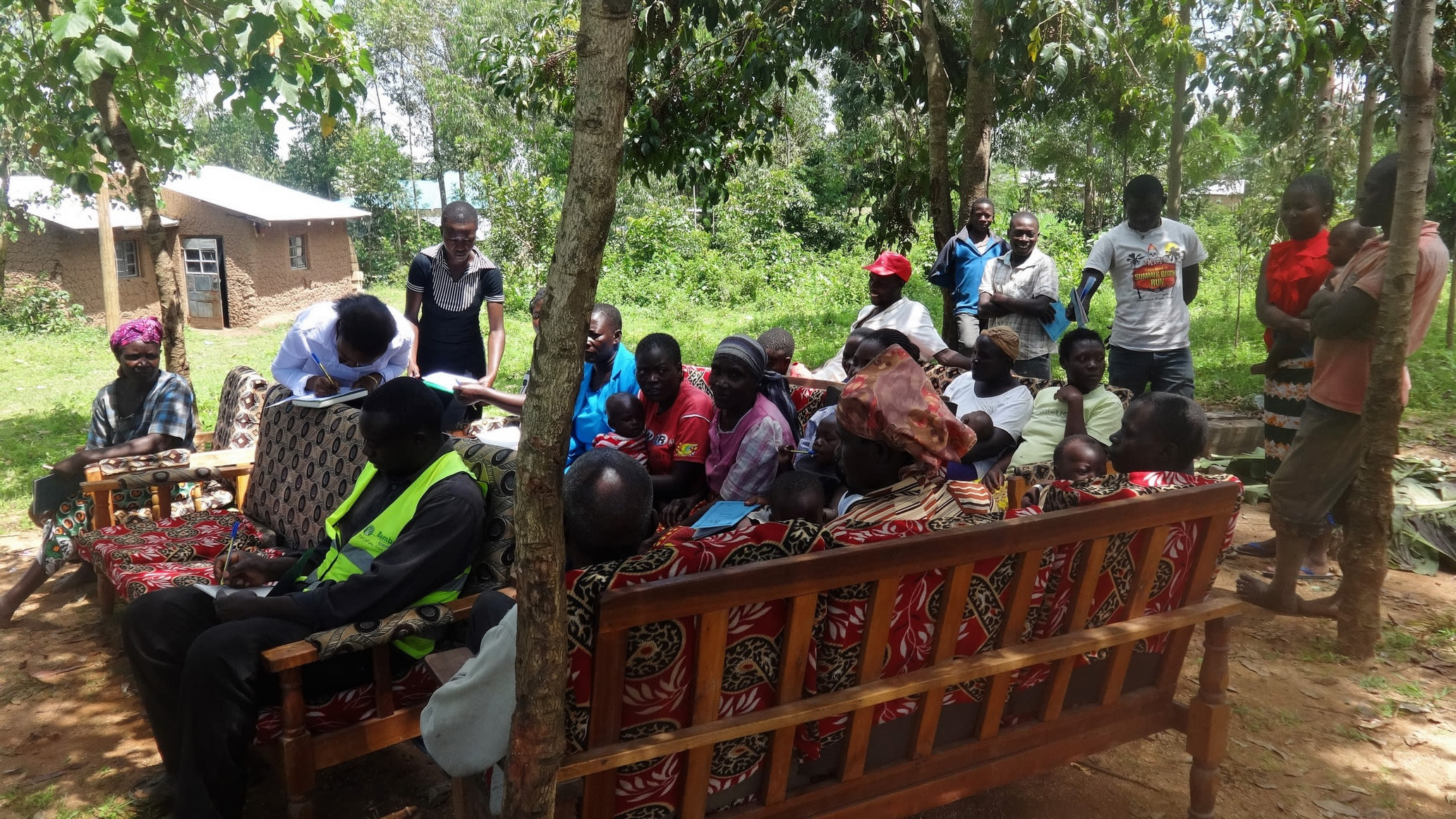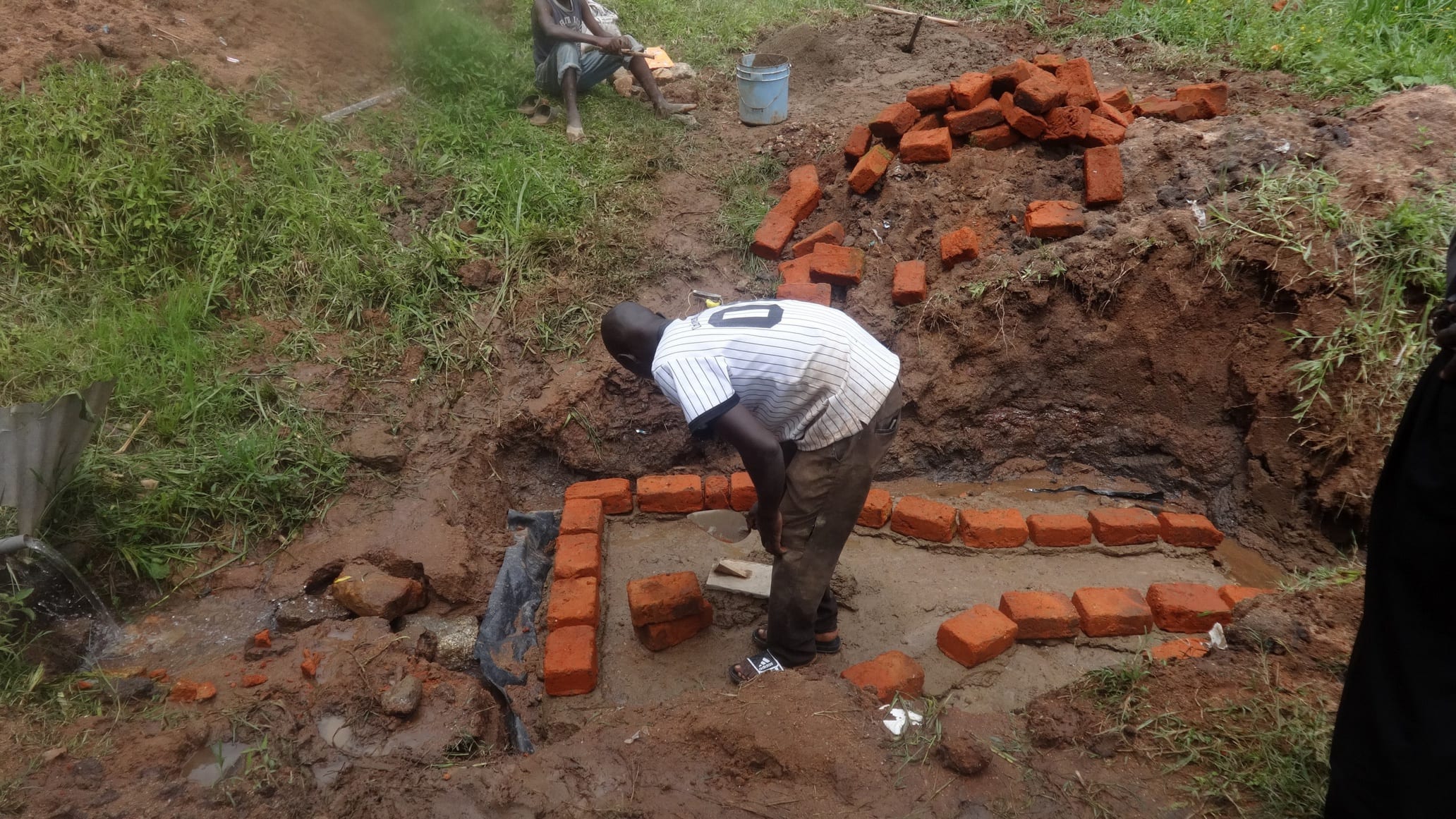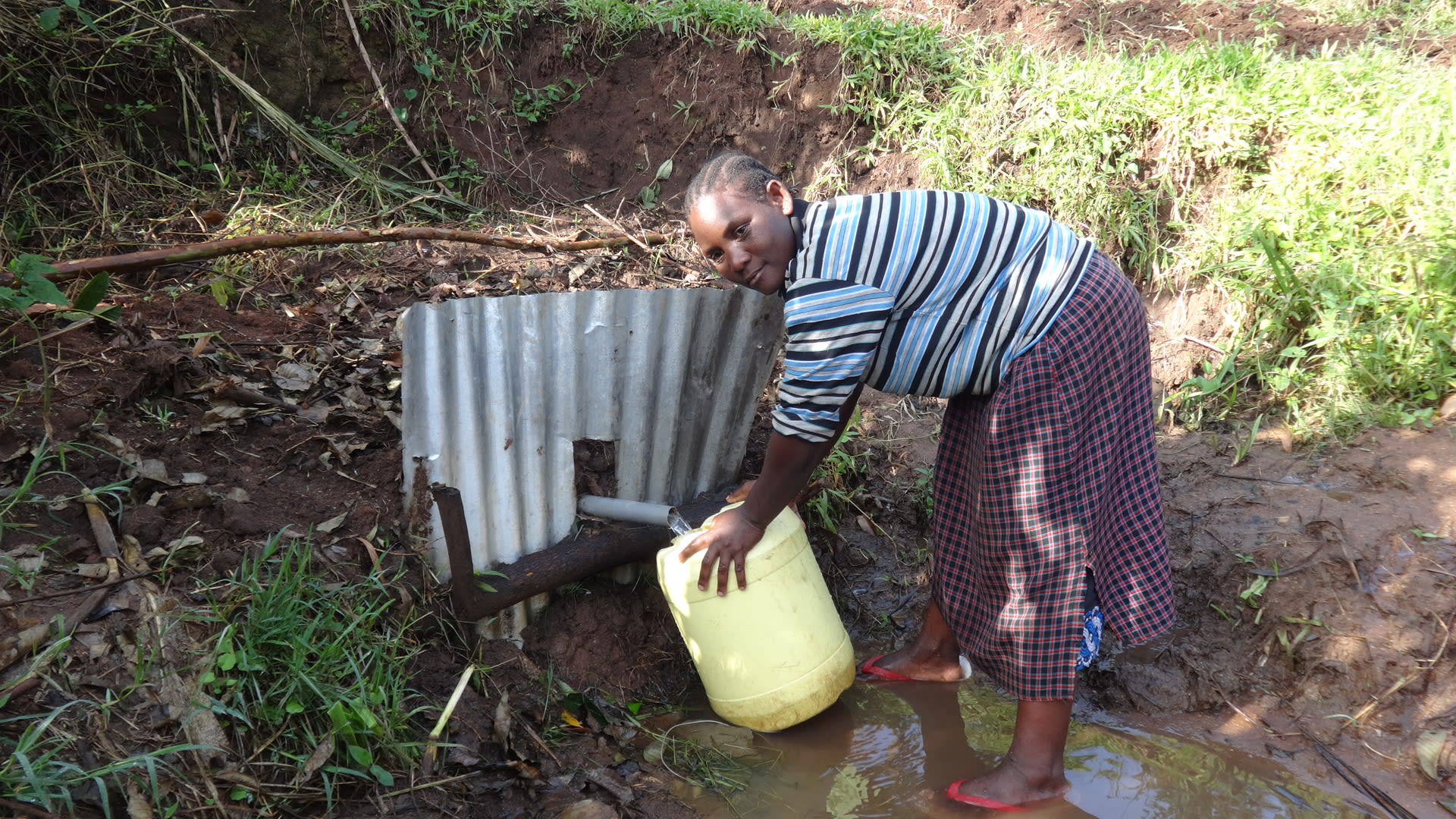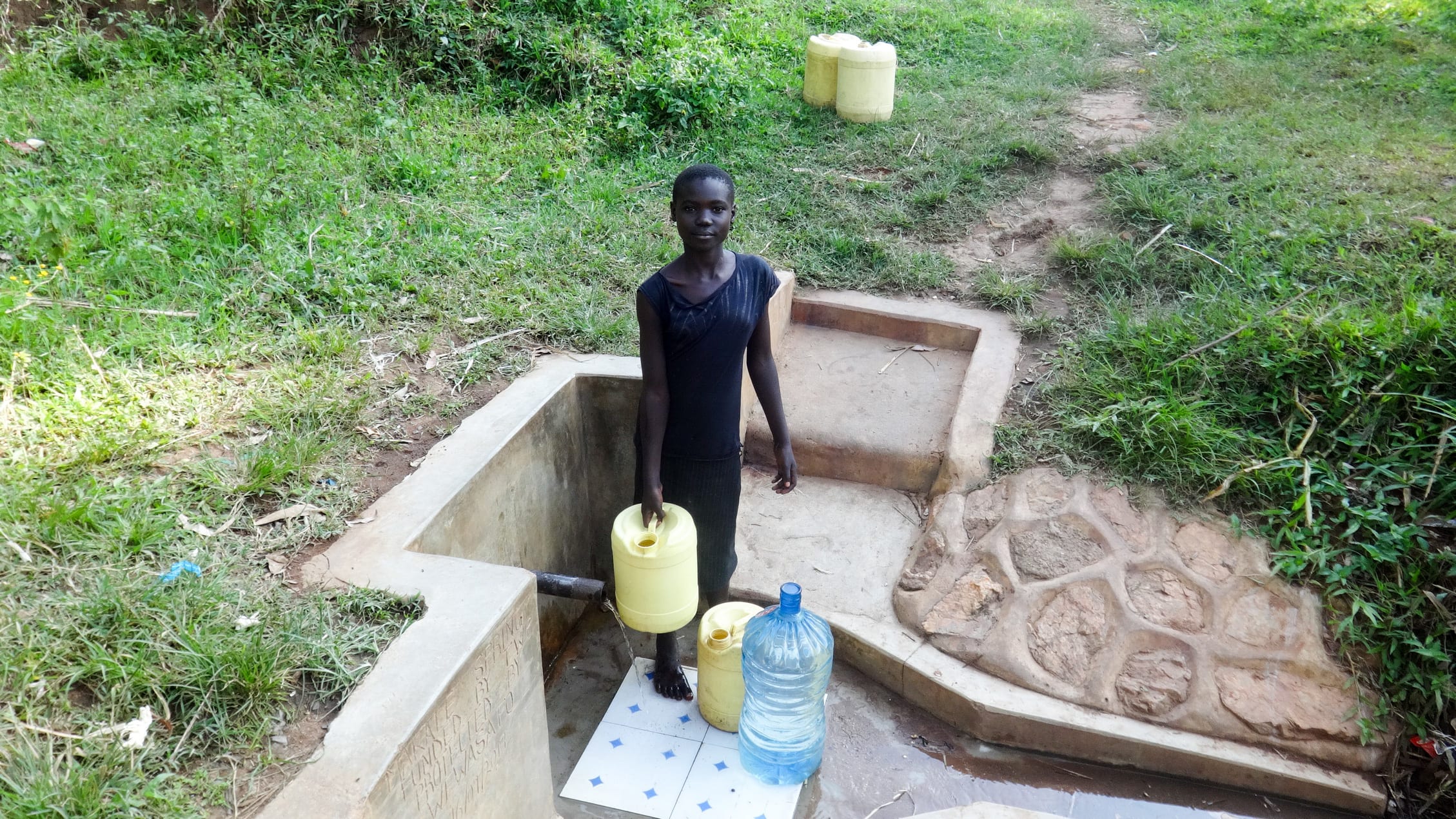This project is a part of our shared program with Western Water and Sanitation Forum (WEWASAFO). Our team is pleased to directly share the below report (edited for clarity, as needed).
Welcome to the Community
In Shitungu Community, women do most of the household chores. The women wake up early in the morning to prepare their children for school before their other chores like collecting firewood, washing clothes, sweeping, farming and fetching water from the unprotected spring among many others!
Most people in the community are involved in farming. They grow maize, vegetables, bananas, sweet potatoes and cassava and others. A few people in the local community have small retail shops from where neighbors buy their household items.
Water Situation
70 different households report that they use Makale Spring for all of their water needs.
A metal pipe has been fixed in the ground to make filling containers easier. Instead of dunking jerrycans under the water, they can be held underneath the pipe until full. There's a lot of activity around this open water source that contribute to its contamination. Animals are brought to Makale Spring to drink, while community members do their laundry at the spring. They also told us that the spring is dirtiest after it rains; rainwater carries slews of dirt and mud directly into the water, and community members have to wait a long time for the water to settle again.
On some occasions, there are crowds of people waiting to fetch water. Women spend a number of hours walking to and waiting at Makale Spring. In this community, fetching water is predominantly a woman's affair.
When delivered back home, dirty water from Makale Spring is stored in 100-liter plastic barrels if intended for cleaning, and poured into covered clay pots if meant for drinking. People report that these clay pots keep water cooler. After drinking this water, residents of Shitungu suffer from waterborne diseases such as typhoid.
Sanitation Situation
Less than half of these households have their own pit latrine. Those who don't have them share with their neighbor or seek the privacy of bushes to relieve themselves. Most of the latrines we observed are made the traditional way, with mud walls and wooden floors. These wooden floors are difficult to clean and susceptible to rot.
The same low number of families have helpful sanitation tools like dish racks, clotheslines, and hand-washing stations.
Plans: Hygiene and Sanitation Training
Community members will attend hygiene and sanitation training for at least two days. This training will ensure participants are no longer ignorant about healthy practices and their importance. The facilitator plans to use PHAST (Participatory Hygiene and Sanitation Transformation), CLTS (Community-Led Total Sanitation), ABCD (Asset-Based Community Development), group discussions, handouts, and demonstrations at the spring.
Training will also result in the formation of a committee that will oversee operations and maintenance at the spring. They will enforce proper behavior around the spring and delegate tasks that will help preserve the site, such as building a fence and digging proper drainage.
Plans: Sanitation Platforms
On the final day of training, participants will select five families that should benefit from new latrine floors.
Training will also inform the community and selected families on what they need to contribute to make this project a success. They must mobilize locally available materials, such as bricks, clean sand, hardcore, and ballast. The five families must prepare by sinking a pit for the sanitation platforms to be placed over. All community members must work together to make sure that accommodations and food are always provided for the work teams.
Plans: Spring Protection
Protecting the spring will ensure that the water is safe, adequate and secure. Construction will keep surface runoff and other contaminants out of the water.
Fetching water is predominantly a female role, done by both women and young girls. Protecting the spring and offering training and support will therefore help empower the female members of the community by giving them more time and efforts to engage and invest in income-generating activities.

 Protected Spring
Protected Spring
 Rehabilitation Project
Rehabilitation Project













